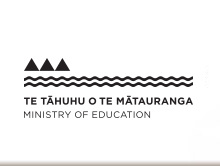Ngā Manu Tukutuku (Wh. 2–17)
nā Keri Kaa
He Whakarāpopototanga
E whitu ngā kōrero poto i roto i tēnei wāhanga. E whakamārama ana i ngā manu tukutuku nō Aotearoa, nō Te Moana-nui-a-Kiwa, nō Rēkohu hoki. Ka horapa i āna mahi huhua i ēnei wāhi. He pakiwaitara hoki i tēnei wāhanga e whakamārama ana i ngā mahi o te manu tukutuku i ngā wā o nehe.
Summary
There are seven short articles in this section. These describe the manu tukutuku from Aotearoa, the Pacific Ocean, and also the Chatham Islands. They describe their uses in these places. There is also a story explaining the traditional use of the manu tukutuku.
| Te momo reo tuhi Language style |
He Tuhinga Taki (Recounts) - He taki whaiaro (Personal recount) |
|---|---|
| Ētahi āhuatanga o tēnei momo reo tuhi Features of this language style |
|
He Ngohe
Anei ētahi ngohe e hāngai ana ki ngā kōrero, ka taea e te pouako te whakamahi kia tutuki ai āna whāinga whakaako. Ka taea anō e te pouako te rāwekeweke ēnei whakaaro kia hāngai ake ki ngā whāinga ako me ngā hiahia o ngā ākonga.
Learning Activities
Here are some activities aligned with the text, which teachers can use to meet their teaching objectives. Teachers can adapted these ideas to align with the learning objectives and needs of the students.
Ngohe 1
Mahi ā-rōpū. Pānuihia ngā kōrero. Whiria ngā whakaaro matua i ngā kaupapa matua, arā, Aotearoa, Te Moana-nui-a-Kiwa, me Rēkohu. Whakaraupapahia ērā kōrero ki tā te tuhinga. Ka mutu tērā, me whakaatu ngā kōrero ki te akomanga.
Activity 1
Group exercise. Read the articles. Pick out the main ideas under the key sections, that is Aotearoa, Te Moana-nui-a-Kiwa, and Rēkohu. Arrange these in sequence as presented in the book and present these ideas to the class.
Ngohe 2
Ranghaua kia rua ngā momo pūrākau mō ngā manu tukutuku. Kātahi ka mahi takitoru ngā ākonga ki te tuhi whakaari e hāngai ana ki tētahi o ngā pūrākau, ka whakaatu ki te akomanga.
Activity 2
Research at least two manu tukutuku stories. Then students work in groups of three to write a short play based on one of the stories, and show it to the class.
Ngohe 3
Rangahau ā-Ipurangi i ētahi kōrero manu tukutuku mai i ngā iwi o ngā ākonga. Tautohutia ngā kaupapa matua o ia kōrero. Tuhia he whakarāpopototanga mō ia kaupapa matua, ka whakaatu ki te akomanga. Tautohutia ngā kaupapa matua e ōrite ana i roto i ngā tuhinga katoa.
Activity 3
Research manu tukutuku on line, focusing on the tribal areas of the students. Write the key ideas from each story. Write a summary for each key idea, then share with the class. Identify common themes across the stories.



